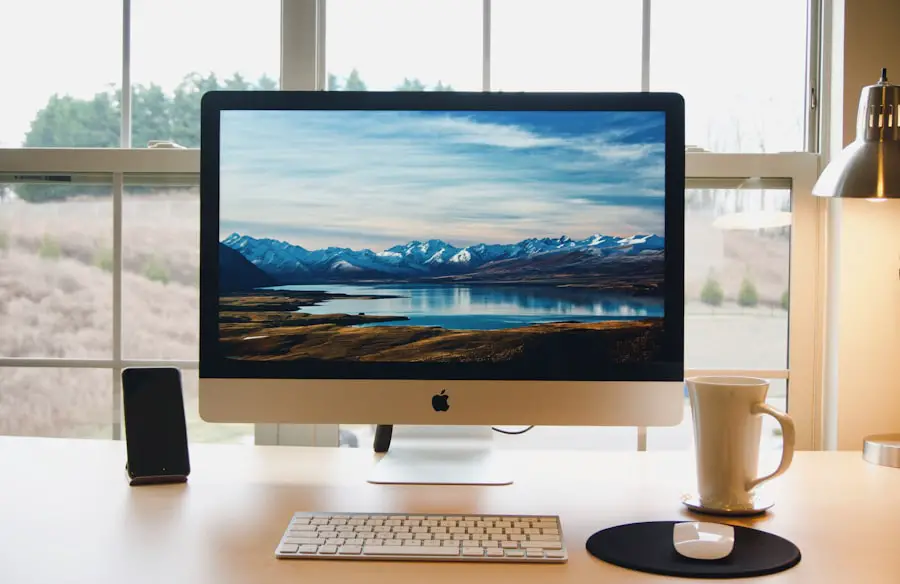Transferring photos from an iPhone to an iMac is a common task for many users who wish to manage their digital memories more effectively. With the increasing quality of smartphone cameras, the number of photos taken on iPhones has skyrocketed, making it essential to have a reliable method for transferring and organizing these images. Whether you are a professional photographer looking to edit your work or a casual user wanting to free up space on your device, understanding the various methods available for transferring photos can enhance your workflow and ensure that your cherished memories are safely stored.
The process of transferring photos can seem daunting at first, especially for those who are not tech-savvy. However, Apple has designed several user-friendly methods that cater to different preferences and needs. From using the built-in Photos app to leveraging cloud services like iCloud, there are multiple avenues to explore.
This article will delve into each method in detail, providing step-by-step instructions and tips to ensure a smooth transfer process.
Key Takeaways
- Transferring iPhone photos to iMac can be done using various methods such as the Photos app, AirDrop, iCloud, USB cable, email, or messaging apps.
- Connecting your iPhone to your iMac can be done wirelessly or using a USB cable, depending on your preference and convenience.
- The Photos app on your iMac allows for easy and seamless transfer of photos from your iPhone, and also provides options for organizing and managing your transferred photos.
- AirDrop is a quick and convenient way to transfer photos from your iPhone to your iMac, especially for larger files or multiple photos at once.
- iCloud provides a convenient way to automatically sync and transfer photos from your iPhone to your iMac, and also allows for easy access to your photos across all your Apple devices.
Connecting Your iPhone to Your iMac
Before you can transfer photos, the first step is to connect your iPhone to your iMac. This can be accomplished in several ways, depending on the method you choose for transferring your images. The most straightforward approach is using a USB cable.
Simply plug one end of the cable into your iPhone and the other into a USB port on your iMac. Once connected, your iMac should recognize the device almost immediately, prompting you with options for what you would like to do with the connected iPhone. Alternatively, if you prefer a wireless connection, you can utilize AirDrop or iCloud.
AirDrop allows for quick transfers between Apple devices without the need for physical cables, while iCloud provides a seamless way to sync photos across devices as long as both are connected to the internet. Regardless of the method chosen, ensuring that your devices are updated with the latest software can help prevent connectivity issues and enhance the overall experience.
Using the Photos App to Transfer Photos

One of the most popular methods for transferring photos from an iPhone to an iMac is through the Photos app. This application is pre-installed on all Macs and serves as a central hub for managing images. To begin, open the Photos app on your iMac after connecting your iPhone via USThe app will automatically detect your device and display an import screen showing all the photos available for transfer.
You can select individual photos or choose to import all new items at once. This feature is particularly useful if you have taken numerous pictures since your last transfer. After making your selections, click the “Import Selected” button, and the Photos app will begin transferring the chosen images to your library.
Once completed, you can find these photos organized by date or album within the app, making it easy to access and edit them later.
Using AirDrop to Transfer Photos
| Device | Transfer Speed | Compatibility |
|---|---|---|
| iPhone to iPhone | Very Fast | iOS 7 or later |
| iPhone to Mac | Fast | OS X Yosemite or later |
| iPhone to iPad | Very Fast | iOS 7 or later |
AirDrop is another efficient method for transferring photos from an iPhone to an iMac, especially when you want to avoid cables altogether. To use AirDrop, ensure that both your iPhone and iMac have Wi-Fi and Bluetooth enabled. On your iPhone, open the Photos app and select the images you wish to transfer.
Tap the share icon, which resembles a square with an upward arrow, and look for your iMac in the AirDrop section. Once you select your iMac, a notification will appear on your computer asking if you want to accept the incoming files. Click “Accept,” and the photos will be transferred wirelessly.
This method is not only quick but also allows for selective sharing of images without cluttering your iMac with unwanted files. AirDrop is particularly advantageous when transferring smaller batches of photos or when you’re on the go.
Using iCloud to Transfer Photos
For users who prefer a cloud-based solution, iCloud offers a convenient way to transfer photos from an iPhone to an iMac without needing a physical connection. To utilize this method, ensure that both devices are signed in with the same Apple ID and that iCloud Photo Library is enabled on your iPhone. You can do this by navigating to Settings > [Your Name] > iCloud > Photos and toggling on “iCloud Photos.” Once enabled, any photo taken on your iPhone will automatically upload to iCloud, making it accessible from your iMac as long as you have an internet connection.
On your iMac, open the Photos app and select “Photos” from the sidebar; you should see all your images synced from your iPhone. This method not only simplifies the transfer process but also serves as a backup solution, ensuring that your photos are safe even if something happens to your device.
Using a USB Cable to Transfer Photos

While wireless methods like AirDrop and iCloud are convenient, using a USB cable remains one of the most reliable ways to transfer photos from an iPhone to an iMac. This method is particularly useful when dealing with large files or when internet connectivity is limited. To begin, connect your iPhone to your iMac using a compatible USB cable.
Once connected, unlock your iPhone and tap “Trust” if prompted; this allows your Mac to access the device’s contents. After establishing a connection, open the Image Capture application on your Mac, which can be found in the Applications folder or through Spotlight search. Image Capture provides a straightforward interface where you can view all photos stored on your device.
You can select specific images or choose to import all photos at once by clicking “Import All.” This method is efficient and ensures that you have complete control over which files are transferred.
Transferring Photos via Email or Messaging Apps
For those who need to transfer only a few photos quickly or share them with others, using email or messaging apps can be an effective solution. This method is particularly useful when you want to send images directly to someone else or when you’re away from home and don’t have access to your usual transfer methods. To do this, open the Photos app on your iPhone and select the images you wish to share.
Tap the share icon and choose either Mail or a messaging app like WhatsApp or Messages. If using email, enter the recipient’s address and add any necessary message before sending it off. The recipient will receive an email with attachments that they can download directly onto their device or computer.
While this method may not be ideal for transferring large batches of photos due to file size limitations imposed by email providers, it remains a quick and effective way to share specific images.
Organizing and Managing Transferred Photos on Your iMac
Once you’ve successfully transferred photos from your iPhone to your iMac, organizing them becomes crucial for easy access in the future. The Photos app offers various features that allow users to categorize their images effectively. You can create albums based on events, dates, or themes by clicking on “File” in the menu bar and selecting “New Album.” Dragging and dropping photos into these albums helps keep everything tidy.
Additionally, utilizing tags and keywords can enhance searchability within the Photos app. By adding descriptive tags related to locations or events, you can quickly locate specific images later without scrolling through endless thumbnails. Regularly reviewing and deleting unwanted or duplicate photos also helps maintain an organized library, ensuring that only meaningful memories are preserved.
Troubleshooting Common Transfer Issues
Despite its user-friendly design, transferring photos from an iPhone to an iMac can sometimes present challenges. One common issue is connectivity problems when using a USB cable; this may occur if the cable is damaged or if there’s dirt in the port of either device. To troubleshoot this issue, try using a different cable or port on your Mac.
Additionally, ensure that both devices are updated with the latest software versions. Another frequent problem arises when using AirDrop; if you cannot see your Mac listed as an option on your iPhone, check that both devices have Bluetooth and Wi-Fi enabled and are within close proximity of each other. If issues persist, restarting both devices often resolves temporary glitches that may be hindering connectivity.
Backing Up Transferred Photos on Your iMac
Backing up transferred photos is essential for safeguarding against data loss due to hardware failure or accidental deletion. One effective way to back up images on your iMac is by utilizing Time Machine, Apple’s built-in backup feature that automatically saves copies of files at regular intervals. To set up Time Machine, connect an external hard drive and navigate to System Preferences > Time Machine; select “Select Backup Disk” and choose your external drive.
In addition to Time Machine, consider manually exporting important albums or individual photos from the Photos app by selecting them and choosing “File” > “Export.” This allows you to save copies in various formats and resolutions on external storage devices or cloud services for added security.
Conclusion and Final Tips for Transferring iPhone Photos to iMac
Transferring photos from an iPhone to an iMac can be accomplished through various methods tailored to different user preferences and needs. Whether opting for wired connections via USB cables or embracing wireless solutions like AirDrop and iCloud, understanding these processes enhances efficiency in managing digital memories. Regular organization of transferred images ensures easy access in the future while backing up data protects against potential loss.
As technology continues evolving, staying informed about updates and new features can further streamline photo management tasks. By employing these strategies and tips outlined in this article, users can enjoy a seamless experience when transferring their cherished moments from their iPhones to their Macs.
If you are looking for more information on how to move pictures from your iPhone to your iMac, you may want to check out the article on Get iPhone Info. They provide helpful tips and step-by-step guides on transferring photos between devices. Additionally, you can reach out to them directly for any specific questions or concerns through their contact page. Make sure to also review their privacy policy for more information on how your data is handled.
FAQs
What are the different ways to move pictures from iPhone to iMac?
There are several ways to transfer pictures from an iPhone to an iMac. You can use the Photos app, Image Capture, AirDrop, iCloud, or a USB cable to transfer the photos.
How to transfer pictures from iPhone to iMac using the Photos app?
To transfer pictures from iPhone to iMac using the Photos app, connect your iPhone to your iMac using a USB cable. Open the Photos app on your iMac, select your iPhone from the sidebar, and then choose the photos you want to import.
What is Image Capture and how can it be used to transfer pictures from iPhone to iMac?
Image Capture is a built-in application on the iMac that allows you to transfer photos from your iPhone to your iMac. Simply connect your iPhone to your iMac using a USB cable, open Image Capture, select the photos you want to import, and then click the “Import” button.
Can I use AirDrop to transfer pictures from iPhone to iMac?
Yes, you can use AirDrop to transfer pictures from iPhone to iMac. Simply enable AirDrop on both your iPhone and iMac, select the photos you want to transfer on your iPhone, and then choose your iMac as the destination for the transfer.
How does iCloud help in transferring pictures from iPhone to iMac?
By enabling iCloud Photo Library on both your iPhone and iMac, your photos will automatically be synced and available on both devices. This allows you to access and download your iPhone photos on your iMac without the need for manual transfers.
Is it possible to transfer pictures from iPhone to iMac using a USB cable?
Yes, you can transfer pictures from iPhone to iMac using a USB cable. Simply connect your iPhone to your iMac using a USB cable, open the Photos app or Image Capture, and then select and import the photos you want to transfer.










